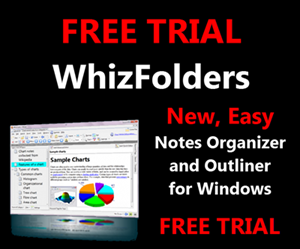What are OLE features?
Full form of OLE is Object Linking and Embedding. It's a technology from Microsoft from Windows 3.1 days. This allows a document to embed an OLE object that represents a document of another application. For example, if your application supports OLE, it should be able to show an Excel spredsheet in its view without doing any particular programming for Excel. In fact, it will support views of all OLE objects that are installed in the system. An OLE object is also called ActiveX in later Microsoft documents.
The best example of OLE in action is Windows Wordpad. Try embedding an Excel OLE object in it by the Insert Object menu and you will be amazed that you can edit that spreadsheet. Further, you can insert a "Link to file" type of OLE object so that the OLE object will then represent a real Excel file on your disk in some other location. The link has an advantage that if you edit that Excel file outside Wordpad, you will see the changes appear instantly in Wordpad too. Look at a list of other OLE objects that you can insert in Wordpad by its Insert Object menu. And Wordpad got all those features just by supporting embedded OLE objects in its code.
WhizFolders Organizer also supports OLE embedding in its Editor: Supporting OLE objects in a Windows application is not easy. But we have implemented it in our program WhizFolders via Microsoft RichEdit control. It works identical to the way it works in Wordpad. If you are a developer and want to support OLE embedding in your Windows application, we can help. We are based in Pune, India.

A new feature now offers the option of inserting an embedded object, rather than an external Jumpfile link. This is done by holding down the Ctrl key when dragging and dropping a file name on the topic editor. A dialog appears allowing you to select the OLE object options. I will describe this dialog in another post. But for the following discussion, assume that I selected “Create from file” and “Link” on the dialog. This way the file stays outside, available to others but its contents are shown by WhizFolders topic viewer or editor.
An OLE (Object Linking and Embedding) object is different from a jumpfile link, in that WhizFolder shows the actual content of the file directly within the topic viewing area. For example, when you drag an MS Word file name (e.g., myfile.doc) from the Explorer to a WhizFolders topic area, the default is to insert a link to that file. Now, holding the Ctrl key during the same operation inserts a representation of the actual content of “myfile.doc” directly into the topic. In this situation, you would have only WhizFolders open, and not the file’s application.
WhizFolders can hold an embedded link, such as this, in the topic area, allowing the underlying and actual file to be modified separately. For example, you might place an embedded object into a topic called “This Year’s Budget.” The object refers to an actual Excel spreadsheet called “thisyear.xls.” Using WhizFolders, you would click on the topic, and the viewing area would show the actual numbers in the spreadsheet. On the other hand, you (or someone else) can open Excel separately, without having WhizFolder open, and make changes to the spreadsheet. Those changes will then be automatically reflected in the WhizFolders topic, the next time you view the “This Year’s Budget” topic.
With this feature you can use WhizFolders as a consolidated “viewer” for many types of different files, gathering them together into an organized project. At the same time, you can create, edit, and format, additional topics within WhizFolders itself. One topic might be text you create directly, whereas another topic might contain a jump link to a Web site. Yet another topic might be a link to a file located on your hard drive (or on a network drive), while a different topic might use an embedded object to show an existing graphic, spreadsheet, document, or other file. Any change to the actual file outside of WhizFolders, is then automatically reflected with the updated information the next time you click on the topic within WhizFolders.
On the basis of a note sent by Craig Landes